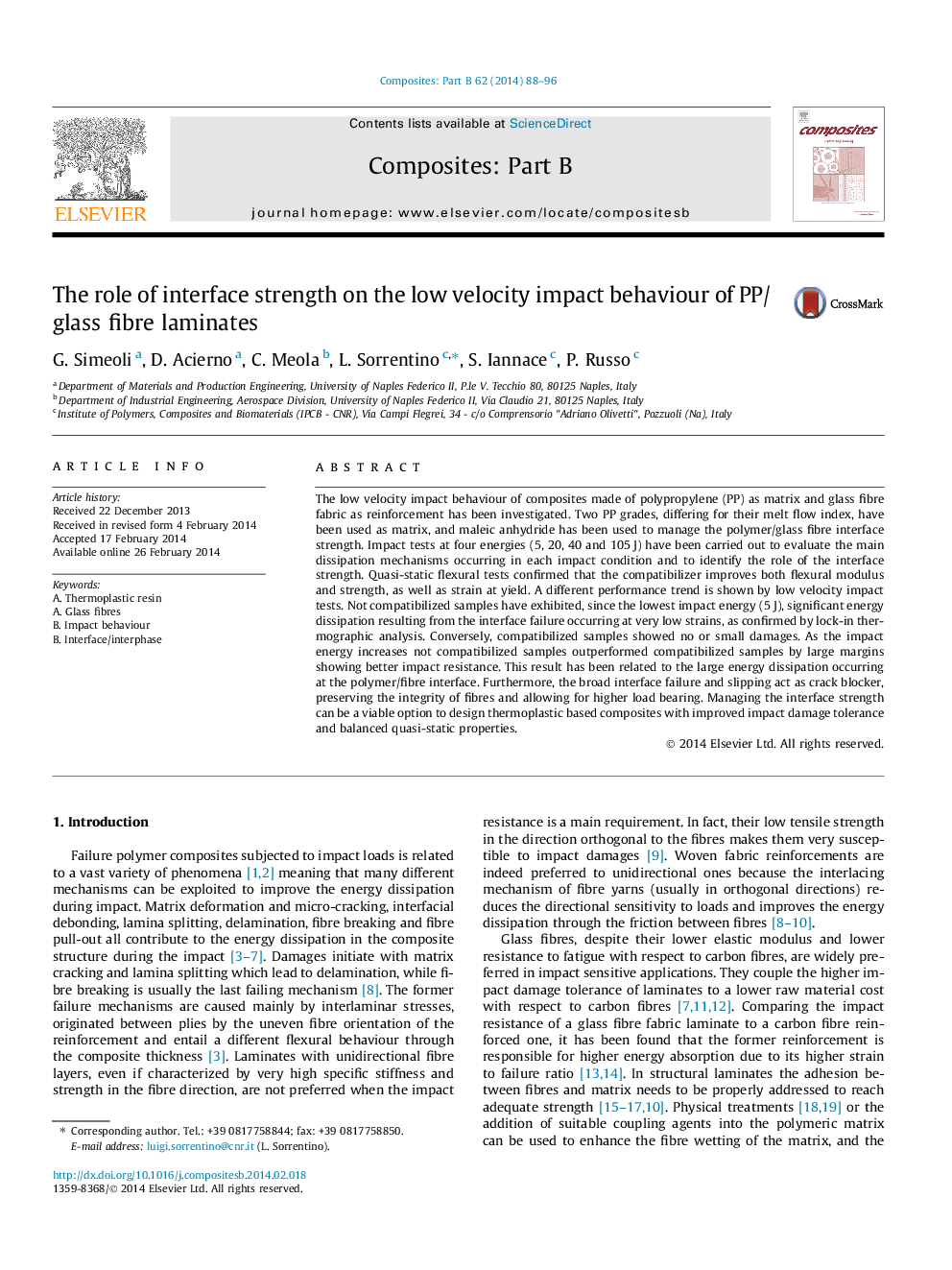| Article ID | Journal | Published Year | Pages | File Type |
|---|---|---|---|---|
| 817667 | Composites Part B: Engineering | 2014 | 9 Pages |
Abstract
The low velocity impact behaviour of composites made of polypropylene (PP) as matrix and glass fibre fabric as reinforcement has been investigated. Two PP grades, differing for their melt flow index, have been used as matrix, and maleic anhydride has been used to manage the polymer/glass fibre interface strength. Impact tests at four energies (5, 20, 40 and 105Â J) have been carried out to evaluate the main dissipation mechanisms occurring in each impact condition and to identify the role of the interface strength. Quasi-static flexural tests confirmed that the compatibilizer improves both flexural modulus and strength, as well as strain at yield. A different performance trend is shown by low velocity impact tests. Not compatibilized samples have exhibited, since the lowest impact energy (5Â J), significant energy dissipation resulting from the interface failure occurring at very low strains, as confirmed by lock-in thermographic analysis. Conversely, compatibilized samples showed no or small damages. As the impact energy increases not compatibilized samples outperformed compatibilized samples by large margins showing better impact resistance. This result has been related to the large energy dissipation occurring at the polymer/fibre interface. Furthermore, the broad interface failure and slipping act as crack blocker, preserving the integrity of fibres and allowing for higher load bearing. Managing the interface strength can be a viable option to design thermoplastic based composites with improved impact damage tolerance and balanced quasi-static properties.
Related Topics
Physical Sciences and Engineering
Engineering
Engineering (General)
Authors
G. Simeoli, D. Acierno, C. Meola, L. Sorrentino, S. Iannace, P. Russo,
